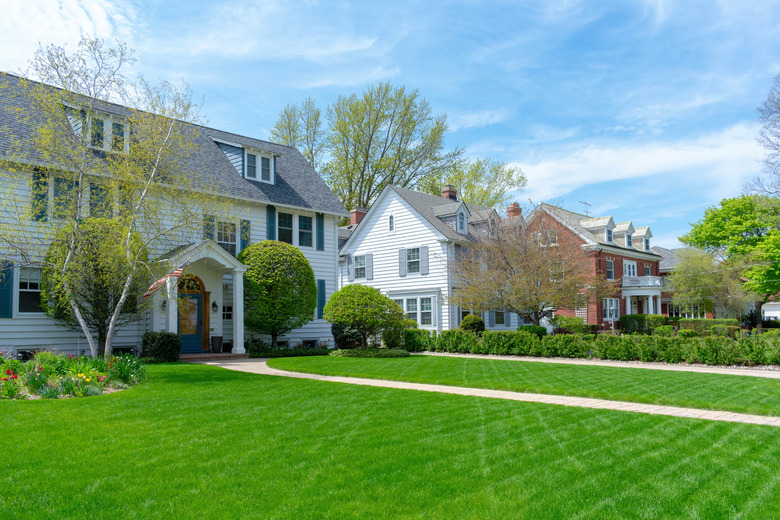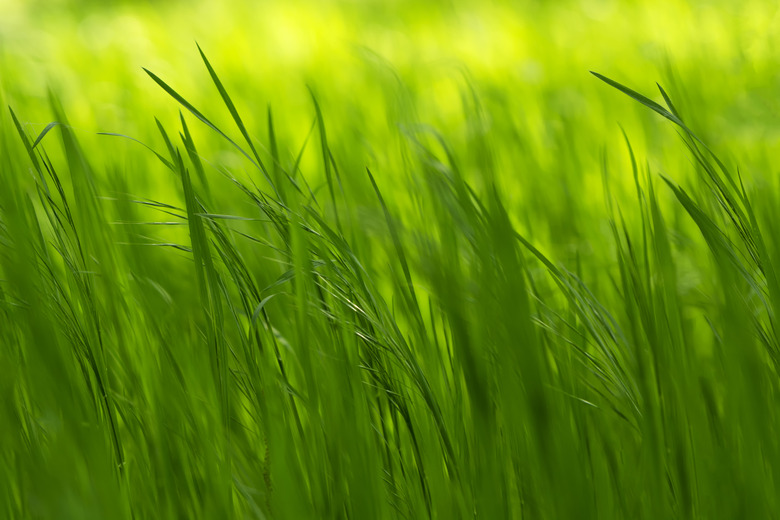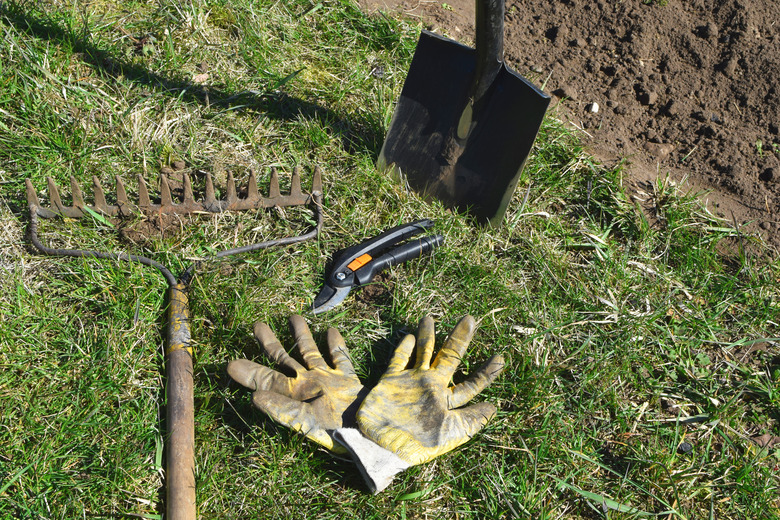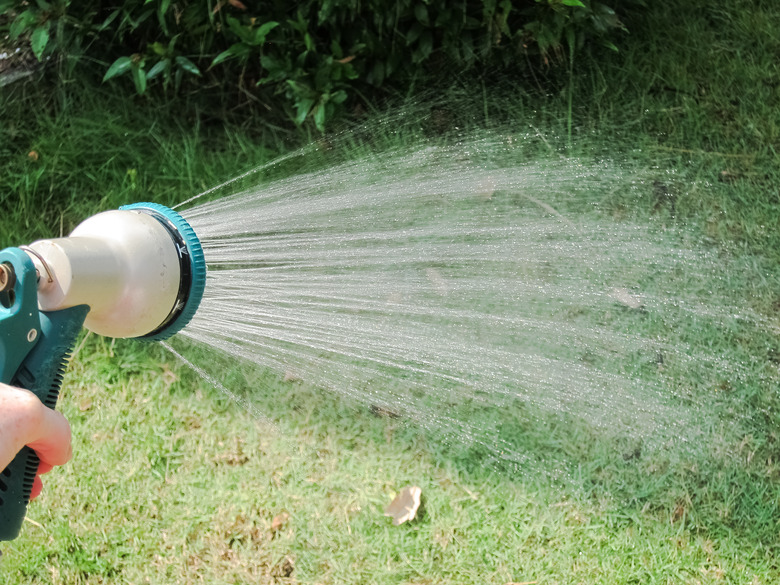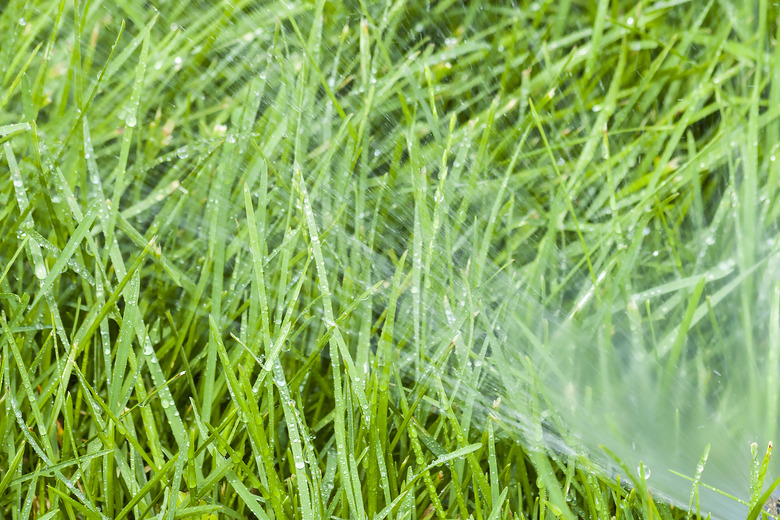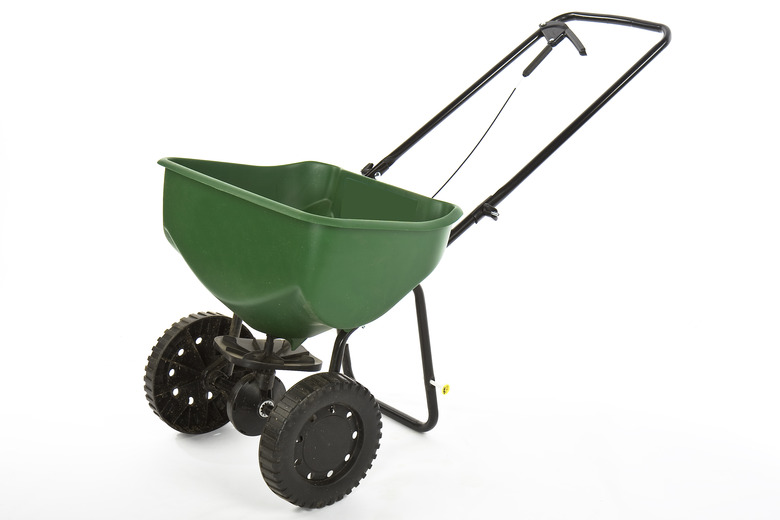How To Repair Lawn Damage From Grubs
If random sections of your lawn look completely dead even though you water them regularly, your yard may have a grub problem. Grubs, which are actually beetle larvae, feed on grass roots, causing damage or even death to parts of the lawn. To make matters worse, grubs are tasty snacks for birds, raccoons, skunks and other neighborhood creatures that may dig up your lawn to find them. In some regions, an investation of moles is a good sign that you may be dealing with a grub problem, as these underground animals will feed on grubs.
The best way to repair a grub-damaged lawn is through reseeding areas that need it the most and controlling grubs with microscopic creatures that destroy them.
Signs of Grub Infestation
Signs of Grub Infestation
Besides patches of grass turning brown and never re-greening even with plenty of water, a few telltale signs point to grubs as the cause of your lawn's failing health. Though the damage likely occurred in fall, spring is when the telltale signs show up, as healthy grass starts to grow and turn a deeper shade of green by the day.
- If the ground feels strangely spongy when you walk across it, grubs could be to blame.
- If patches of grass can be pulled up like a loose carpet, grubs are also the probable cause, since they attack plants at the root level.
- Raccoons, skunks, or other small animals digging all over the yard for no obvious reason also could mean grubs are present.
Lift up a handful of the affected grass. If it isn't loose enough to come completely free from the surrounding lawn, use a pocket knife or garden tool to cut an arc or triangular flap. Flip the dead grass flap over, inspecting the soil beneath. Grubs, which look like small white worms or caterpillars, should be evident in the freshly exposed dirt. Get rid of the grubs you find by dropping them into a bucket of warm, soapy water.
How to Repair Minor Damage from Grumbs
How to Repair Minor Damage from Grumbs
In all but extreme infestations, the lawn can usually be salvaged without a complete makeover.
- Use a garden rake to go over the affected spots if they're not too loose to rake, removing thatch and dead grass. If all the grass is dead and comes up like a detached piece of carpet, remove it completely. In either case, rake the problem area a bit more to loosen soil.
- Sprinkle grass seeds over the area; 10 to 15 seeds per square inch is a good target quantity for a completely bald area; less will suffice if surrounding grass is still fairly healthy.
- Tamp the seeds down gently with your foot, then sprinkle no more than 1/4 inch topsoil over the seeds.
- Sprinkle the area so it's damp but not flooded with water. Lightly water the seeded area every day— or more often if the ground feels dry—until the grass is a couple inches tall. This should take two to three weeks. Water daily after that.
Tip
Although it's possible to reseed areas in the middle of summer, the grass has a better chance of survival if planted in the middle of spring or fall, when the weather is cooler.
Use a grass seed comparable to what's already on your lawn to ensure the new grass blends in. If you aren't sure what kind of grass it is, pick a variety that grows well in the given conditions and that doesn't grow incredibly fast.
Getting Rid of Grubs
Getting Rid of Grubs
While raking and reseeding parts of the lawn make it look good again, this process doesn't get rid of the grubs. Beetle varieties such as Japanese beetle and European chafer lay their eggs in the yards in early to mid-summer. These eggs hatching into hungry grubs that start doing damage later in summer. For this reason, late summer and early autumn are ideal for treating active grubs, before they burrow deeper when temperatures drop.
Beneficial nematodes, a type of microscopic worm, are the secret weapon that starts killing grubs within 48 hours after reaching them. It could take a couple applications for them to be completely effective. The Heterorhabditis bacteriophora variety is best at killing beetle larvae, as they'll burrow deeper to find their targets. These nematodes do no harm to earthworms, people, pets or plants, so they're an ideal way to control a grub problem without any chemicals. Nematodes work by burrowing inside the grubs, destroying them from the inside out. Some companies offer nematodes that also seek out flea larvae, cutworms and other pests. Look for nematodes at home improvement stores, garden centers and through online vendors.
Since nematodes are tiny, it takes about 5 million to treat a 1,500-square-foot yard. Store the nematodes in the refrigerator for up to two weeks before application. Two applications, applied one or two weeks apart, are ideal. A hose-end lawn sprayer with an adjustable mix rate is also required.
Mix the nematodes in water according to package directions, which may vary by brand. Water the lawn lightly just after dawn or before dusk, as UV rays harm nematodes. Apply the nematodes by spraying the areas of the most damage. Apply more nematodes to the area surrounding the problem spots, if desired. Water the yard again lightly afterwards, then every few days as needed.
Feel free to treat the yard again late in fall, but before temperatures drop below freezing.
All Yards May Have Grubs
All Yards May Have Grubs
Grubs are completely normal and natural in just about any lawn. A few grubs aren't an issue, but more than 10 in any square foot of yard space could be problematic. Grubs may also burrow in gardens. If your yard has a grub issue, treat garden spaces with nematodes as well.
Any time you spot beetles flying around the yard or in the garden, you can expect that grubs will follow, too. Beetles can be eliminated by scraping them off plants into a bucket of soapy water.
Preventing Future Infestations
Preventing Future Infestations
Water the lawn deeply and infrequently to encourage deep root growth and a thick lawn. Grubs thrive in areas with thin grass and moist soil, so keeping the lawn as lush as possible helps prevent grubs.
Reseed thin areas as needed to help prevent grub infestations. Use a garden rake to dethatch lawns regularly, which helps keep the grass healthy. Thatch looks like brown grass growing more sideways than vertically atop the soil.
Dealing with Major Damage
Dealing with Major Damage
If grubs have killed off most of your lawn, reseeding large sections is the best option.
- Remove all the dead grass with a garden rake. Compost the grass, if you have a compost pile, or place it in lawn bags for pickup.
- Rake the soil to loosen it, placing any grubs you find in soapy water.
- Add an inch of fresh topsoil.
- Choose a turf-building grass seed variety that grows well in your region. Reseed the lawn with a spreader for optimal coverage, adjusting the spreader as indicated on the grass-seed packaging.
- Tamp the seeds down gently by walking over the yard, if desired.
- Water the reseeded areas daily. Straw can be placed atop the seeds, if desired, to help them get established.
- Do not mow the reseeded areas until the new grass is 2 to 3 tall.
